COUNTRY REPORT
By Gordon Platt
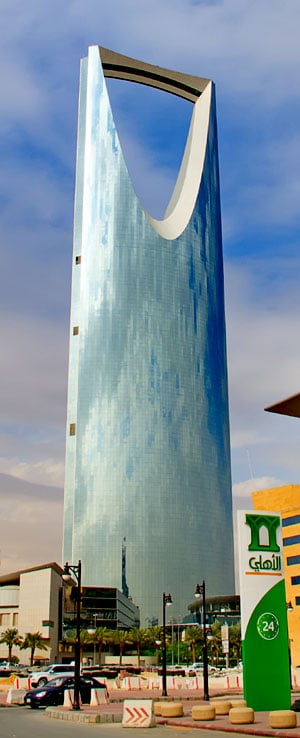
The coming year could be crucial for Saudi Arabia, as the Middle Eastern powerhouse deals with a changing global landscape in terms of both its primary economic driveroiland its key international partnerships.
Three years after the Arab Spring, Saudi Arabia is struggling to reform its oil-based economy to provide more jobs for its people, even as it responds to the threat of spiraling unrest in the region.
With the US pursuing a negotiated settlement with Shiite Iran, and with the violence in Syria spilling over into Lebanon and Iraq, Saudi Arabia has given massive cash infusions to its Sunni allies in the region.
Meanwhile, the kingdom is weighing the geopolitical impact of the shale-oil revolution and the growing energy independence of the US. Shifting alliances in the region could have significant implications for companies and investors.
Ian Bremmer, president of Eurasia Group, a global political risk research and consulting firm, notes that the ongoing nuclear negotiation with Iran poses the principal threat to an aligned US and Saudi Arabia. An Iranian deal would undercut Saudi Arabias leadership over fellow Gulf states, as other Gulf Cooperation Council members like Kuwait and the United Arab Emirates would welcome resurgent trade with Iran.
In a recent blog, Bremmer highlights the top 10 political risks of 2014, and half of them involve Saudi Arabia and/or US policy missteps in the Middle East. Leading the list are Americas troubled alliances and the increasing difficulty of predicting and interpreting US foreign policy. The crippling effects of sanctions on Irans economy and the victory of Hassan Rouhani in last Junes presidential election have vastly improved the chances for a comprehensive settlement between Iran and the West, Bremmer says.
Meanwhile, the shale-oil boom is accelerating the growth of spare capacity and will put downward pressure on oil prices. The International Energy Agency says the US will surpass Saudi Arabia as the top oil producer by 2016. With its growing energy independence, the US could be less inclined to expand its oil-for-arms relationship with the kingdom. Saudi Arabia is turning to France as a closer ally in the region and a potential arms supplier. The two countries carried out joint military exercises last November, amid Saudi disappointment that the US did not take military action against Syria.
France and Saudi Arabia also are discussing a multibillion-dollar deal to modernize the kingdoms air defenses. Saudi Arabia pledged $3 billion to Lebanon in December to enable that countrys army to buy weapons from France, in a challenge to Lebanons Iranian-backed Hezbollah militia.
ECONOMIC SHIFT
The surge in Saudi Arabias government spending following the Arab Spring uprisings is unsustainable. An uncertain oil market and labor reforms are slowing growth in the economy. In its budget for 2014, the kingdom is redirecting spending away from big construction projects and toward social programs, such as education and healthcare.
The economic outlook is positive for 2014, but stubbornly high unemployment and a potential decline in oil prices are increasing the urgency of creating jobs in the private sector for the countrys fast-growing population, economists say.
The governments record 2014 budget is expansionary, but it includes the smallest increase in spending in more than a decade. Spending will increase 4.3% to $228 billion this year, compared with a rise of nearly 20% in the 2013 budget, the Finance Ministry said in a statement. Capital spending on big construction projects will decline for the first time in 12 years.
A plump cushion of surpluses built up during the recent years of high oil prices and high production will soften the blow of any downturn in the oil market. However, the kingdom could face a budget deficit as soon as 2016, if spending continues to grow, the International Monetary Fund says. The IMF advised Saudi Arabia last year to move quickly to address housing shortages, develop the small and medium-size enterprise sector and further strengthen its fiscal position while the economy is still strong.
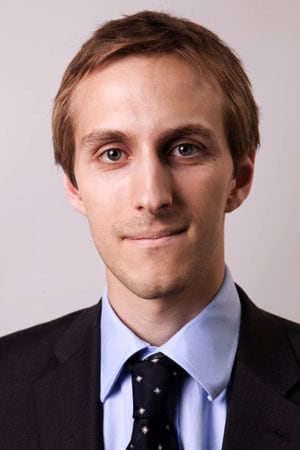
|
|
|
The population of Saudi Arabia, which is now about 30 million, will continue to grow rapidly, and the labor force will expand at a 3.5% annual rate over coming years, the IMF says.
Under the Saudization program announced in 2011, the government has issued quotas for private companies to hire Saudi nationals, who make up only about 11% of the private-sector workforce. Fines collected from companies that fail to meet their quotas totaled $3.9 billion in 2013, according to economists at NCB Capital. The Human Resources Development Fund will use this money to subsidize the hiring of more Saudis.
Meanwhile, 1 million foreign workers fled the country in 2013, as the result of a government crackdown on illegal migrant workers. Instead of having the desired effect of lowering the unemployment rate of Saudi nationals, which now hovers around 12%, the purge of foreign workers threatens to lead to labor shortages, rising inflation and disruptions to economic activity, according to a report by London-based Capital Economics.
Getting more Saudis into private-sector work will require reforms to the countrys education system and, perhaps, incentives to increase wages in jobs previously held by migrants, the report says. The Saudization program could work in the long term, but it would take a generation, says William Jackson, emerging markets economist at Capital Economics. It is certainly something that Saudi Arabia needs, as it seeks to diversify its economy.
In the past, the Saudi authorities have resorted to increasing public-sector employment to keep a lid on the unemployment rate. But there is evidence that, rather than reducing joblessness, this tactic is crowding out the private sector, Capital Economics says.
THE PRICE OF OIL
Rising public-sector employment has pushed up the governments wage bill and made Saudi Arabia more reliant on ever-higher oil prices, according to Capital Economics. The government currently requires a price of around $85 to $90 per barrel in order to balance its budget, Jackson says. But if oil prices fall over the next couple of years, as we expect, Saudi Arabia could end up running a budget deficit as early as 2015.
Capital Economics expects the price of Brent crude to fall to $90 a barrel by the end of 2014, and to $85 a barrel by the end of 2015. The decline would result from increased supplies coming onto the market from North American shale and growing crude output in Iran, Iraq and Venezuela, Jackson says, adding: The sharp fall in Libyan oil production was one reason the Saudi economy accelerated last year, as the kingdom stepped up oil output to fill the gap, but Libyan output could quickly increase.
High oil prices and increased production of crude brought Saudi Arabia substantial surpluses in recent years, but the dynamics of the oil market are changing. Saudi Arabias domestic consumption of oil is rising and plays a growing role in determining the countrys production levels.
Saudi Arabia indicated recently that it would no longer unilaterally cut production to protect oil prices, which, it says, is the responsibility of the Organization of the Petroleum Exporting Countries (OPEC), not the kingdom alone. With non-OPEC supplies expected to rise sharply in 2014, OPEC may need to cut output in order to maintain prices close to $100 per barrel, according to economists at National Bank of Kuwait. They also say that increased demand from a recovery in the developed economies could soak up much of the increased supply.
Saudi Arabia has been one of the fastest-growing economies in the G20 in the past 10 years, and it remains the largest project market in the Middle East. However, government spending in the project sector is beginning to slow, and real GDP growth could also slow in 2014 if oil prices weaken, as many economists predict it will. Overall economic growth slowed to 3.8% in 2013 from 5.8% in 2012, owing to negative growth in the oil sector, the Finance Ministry reports.
The impact of increasing North American production is at the forefront of Saudi policymakers minds, and there appears to have been a more careful husbanding of resources [in 2013], a feature that is likely to continue for the next couple of years at least, according to a report by the economics department at Riyadh-based Samba Financial Group.
The oil market outlook is extremely uncertain, says the report authored by Samba deputy chief economists James Reeve and Andrew Gilmour. Much depends on political and security developments affecting oil supplies in Libya and Iraq, as well as the potential for a permanent agreement with Iran that could lead to a lifting of sanctions, the report says.
The Samba economists are holding to their forecast of $102-per-barrel oil for Brent this year, with the price falling to $95 a barrel in 2015. However, if Libyan and Iraqi supplies surge, and Iranian oil quickly returns to the market, oil prices could fall sharply during the second half of 2014, Samba says.
Saudi oil output rose to 10 million barrels per day during the hot summer months of last yearwhen demand for air conditioning was highestand then dropped back to around 9.7 million bpd later in 2013, according to Samba. The bank expects real GDP growth, which was close to 4% in 2013, to slow to around 3% this year, and 2.8% in 2015, as a result of a drag from the hydrocarbons sector. Saudi Arabia is the worlds biggest user of crude oil for power production, although it is gradually shifting some power plants to natural gas.
The IMF is taking a more rosy view of the countrys economic outlook than are private-sector economists. It expects real GDP growth to accelerate to 4.4% in 2014. Growth in the non-oil sector is expected to remain robust at around 5%, although that would be well below the 7% average of the past decade.
After meeting with Saudi authorities in Riyadh in December 2013, IMF deputy managing director Zhu Min said that with up to two million nationals likely to enter the labor force over the next decade, it will be critical to increase their ability to compete for jobs in the private sector. It is important to note the authorities efforts to promote the employment of Saudis, in particular women, he said. The unemployment rate for Saudi youths is around 30% and it is 35% for women.
GOVERNMENT CRACKDOWN
Meanwhile, the Saudi economy is already feeling the effects of the government crackdown on illegal foreign workers. Roughly a million of the countrys 8.5 million expatriates were forced to return to their home countries last year, and more are expected to leave in 2014. The Saudization program is having a major impact on the construction industry, which is heavily dependent on foreign labor. Manpower shortages have developed in the transport and retail sectors. A shortage of taxi drivers is being keenly felt in some cities, according to Samba.
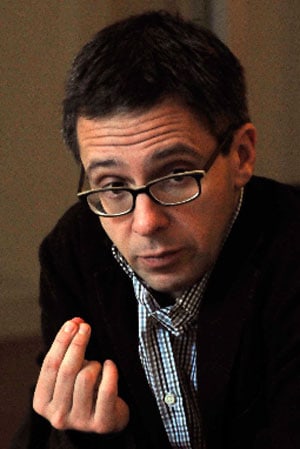
|
|
|
Labor minister Adel Fakeih said in December that 254,000 Saudis had been employed as a result of the deportations and a 25% decline in foreign labor recruitment. He said the raids against illegal expatriates would continue.
It seems unlikely, however, that Saudi nationals would willingly take the jobs that have been left behind by the departing expatriates, according to Capital Economics. For one thing, wages in the public sector are higher and working hours tend to be lower, it says.
Wages in some private-sector jobs are lower than Saudis can receive on unemployment. Because public-sector jobs are more attractive, workers tend to acquire skills that are more suited to the public sector, leading to a mismatch of skills in the labor market, Capital Economics says.
In its latest Global Competiveness Report, the World Economic Forum says an inadequately educated workforce was considered among the most problematic factors for doing business in Saudi Arabia. Nearly 25% of government spending in 2014 will go toward education and training.
Measures to promote financial development should continue in step with ongoing reforms to strengthen financial-sector regulation and supervision, the IMF says. Saudi Arabia was among the first countries to implement Basel III capital standards for the banking system, which is well capitalized, liquid and profitable.
While Saudi Arabia is beginning to tackle its structural economic problems, the challenge from growing instability in the region is expanding. This year, expect violence in Iraq to skyrocket, as Iranian influence grows in Baghdad (much to Saudi Arabias dismay), says Bremmer of Eurasia Group. With questions surrounding the US role in the region, Irans nuclear program and al-Qaeda, as well as ongoing transitions in Egypt and Tunisia, the region could become even more unhinged, he says.
The US will continue buying Saudi oil for years to come, and will still sell the kingdom weapons, but US policy in the region has set the US at odds with Saudi interests, Bremmer says. And if the deal between Iran and the West should fall apart, he adds, the risk of military action will rise.
FINANCIAL MARKETS SUPPORT GROWTH
Credit growth in Saudi Arabia has remained strong and is helping to support private sector growth. Bank lending to the private sector rose about 14% in 2013, according to investment firm Jadwa Investment. Total deposits continued to grow, with demand deposits accounting for an increasing share of the deposit base, as low interest rates discouraged saving.
Riyadh-based stock market Tadawul’s All-Share Index rose by 25.5% in 2013, which was the second straight year of strong growth. The petrochemical sector will drive stock market growth in 2014, according to NCB Capital, a Saudi asset manager. The firm expects petrochemical prices to rise on improved global demand, while raw material prices will remain low. New start-ups and increased productivity are likely to increase 2014 earnings for the sector by 21%, NCB Capital says.
There were only five initial public offerings in Saudi Arabia in 2013, but analysts are forecasting a strong increase in IPOs this year. Al-Hokair Group, one of the largest entertainment and hospitality firms in the Middle East, is planning to raise about $200 million in an IPO on Tadawul. The company operates 48 entertainment parks with rides, skating rinks, multiplayer video games and restaurants at shopping malls across the country. Al-Hokair also owns or operates 33 hotels in the Middle East, including such brands as Hilton, Novotel and Holiday Inn.
Two of Saudi Arabia’s largest private hospital groups, Dr Sulaiman Al-Habib Medical Group and Almana General Hospital, are also planning to go public. ACWA Power, which plans to invest $3 billion in solar-energy facilities in the next five years, also plans an IPO, although the timing is uncertain. Most capital markets activity will be centered in the debt markets, according to PwC. There has been strong recent demand for both Saudi sovereign bonds and sukuk, and this trend most likely will continue, PwC says.
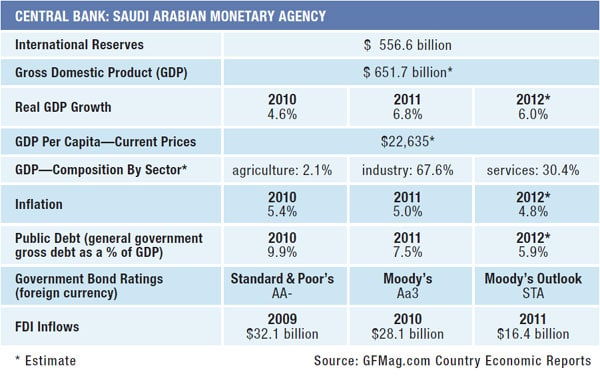
ALTERNATIVE ENERGY LEADS PROJECT MARKET
One of the biggest project initiatives in Saudi Arabia in recent years is the $100 billion-plus renewable and alternative energy program planned by KA-Care (King Abdullah City for Atomic and Renewable Energy), as the government seeks to diversify its energy resources and reduce reliance on liquid fuels, according to research firm MEED Insight. KA-Care is a sustainable city being built 15 miles southwest of Riyadh. It will include research and development centers for creating alternative energy sources for generating power and producing desalinated water.
Hashim bin Abdullah Yamani, KA-Care president, said in a statement that Saudi Arabia is determined to build an energy system based on the latest technologies available that have been tried and tested in terms of environmental safety and security. The project aims to attract local and foreign investments in solar, wind, waste-to-energy and geothermal resources.
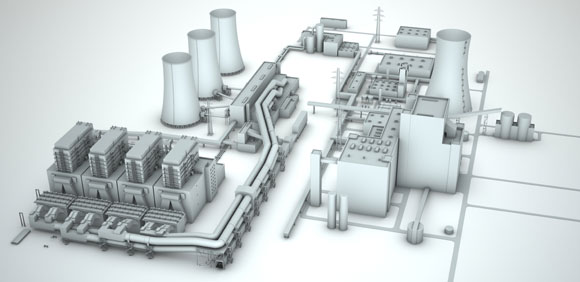
Rising domestic demand for heavily subsidized oil, gasoline and electricity threatens to reduce the amount of crude available for export. The country already consumes one-third of its oil production. Saudi Arabia plans to build 16 nuclear power reactors over the next 20 years. A National Atomic Regulatory Authority was set up last year.
In September 2013, both GE Hitachi Nuclear Energy and Toshiba/Westinghouse signed contracts with Exelon Nuclear Partners (ENP) to pursue deals with KA-Care to build reactors. ENP is a division of Exelon Generation, the largest nuclear fleet operator in the US, with 18 reactors. Kepco (Korea Electric Power) has offered to support the localization of nuclear technology if Saudi Arabia purchases South Korean reactors. France and China have also signed nuclear cooperation agreements with the kingdom.



